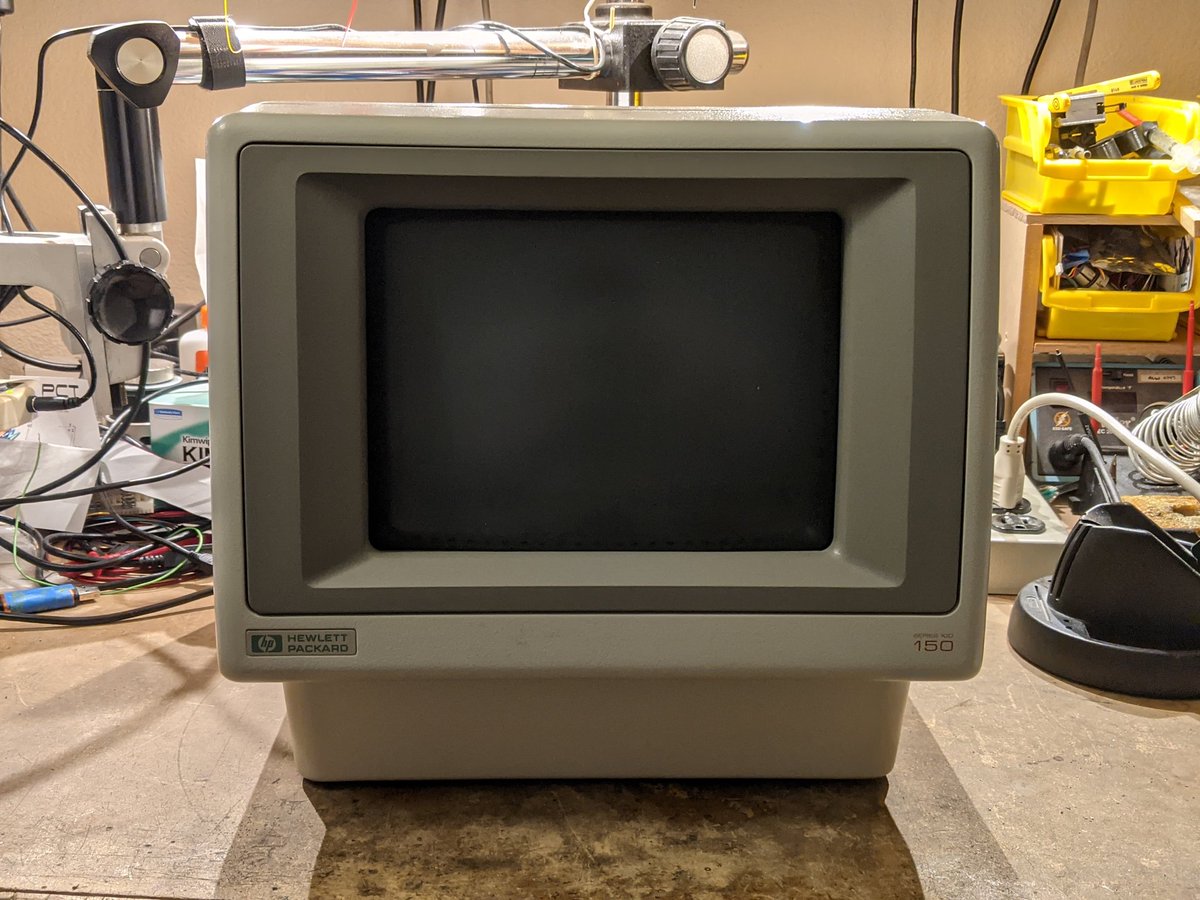
how it works: when you push the button, the metal hammer snags on plastic ledge, and the left spring (heavy) compresses. as you continue to push the button, a wedge lifts up the hammer and it SNAPS off the ledge, slamming into the piezo, which changes force into electricity.🎇 

question is, how much voltage does it generate? and what does the pulse look like?
well, we can measure it using an oscilloscope! but the voltage could be quite high, so we need a way to scale the voltage. a resistor divider would be pretty tricky because of the high voltages -- it creates an RC filter with the input capacitance of the scope. 

it turns out there's another way! you can make a voltage divider using capacitors, and it works (for AC and pulses) in an analogous way. this divider is about 100:1. 

only caveat is that the upper capacitor (the 100pF one) needs to handle high voltage. i don't have one, but i can MAKE one!
here's a 100pF capacitor capable of handing about 15,000 volts. yeah i made it out of aluminum foil and pieces of plastic. 

it's a sandwich. the 3" square aluminum plates act as the parallel plates of the capacitor, and the plastic sheet in between is the dielectric. the outer plastic pieces hold it all together. 

my oscilloscope is analog, so i set it to normal mode and took a video with my phone, and just picked out one frame. you can see it peaks at a bit over 50V which is around 5KV. the pulse is around 15us wide. 

so what good is it? well, with a simple modification of this circuit, i can turn it into a quick and dirty ESD zapper!
the professional ones are thousands of dollars and (of course) generate very precisely controlled pulses. (image from commons.wikimedia.org/wiki/File:Bayt…) 

in concept they aren't too complicated. basically a high voltage source charges up a low-leakage capacitor, and then it discharges into the device under test through a 1.5K resistor. it's supposed to simulate a charged human being zapping the electronic device.⚡️ 

here's mine. i took the same basic circuit and added a diode to prevent the capacitor from discharging into the ignitor. it is literally a bunch of 1N4007 diodes wired in series (ignore the resistors, those are disabled) 

testing the *voltage* of the output pulse is easy, just short the output to ground. this wires the two capacitors in series and you get to see the scaled pulse peak voltage on the scope. (the pulse width isn't accurate in this case)
so what ELSE can you do with a barbeque ignitor, besides igniting barbeques?
someone else came up with this clever arrangement for creating large but highly focused magnetic pulses to purposefully trigger glitches in digital chips.
https://twitter.com/rqu50/status/1485876188652310534
i've also used a barbeque ignitor to test a very unusual electronic component called a coherer.
https://twitter.com/TubeTimeUS/status/1192964604487323650
and you can also (sometimes) use one to make your electronics trip out. this is another form of ESD testing--instead of zapping the device itself, you zap a nearby ground plane.
https://twitter.com/TubeTimeUS/status/1193258906983661568
can you think of any other creative uses for one of these?
• • •
Missing some Tweet in this thread? You can try to
force a refresh



















